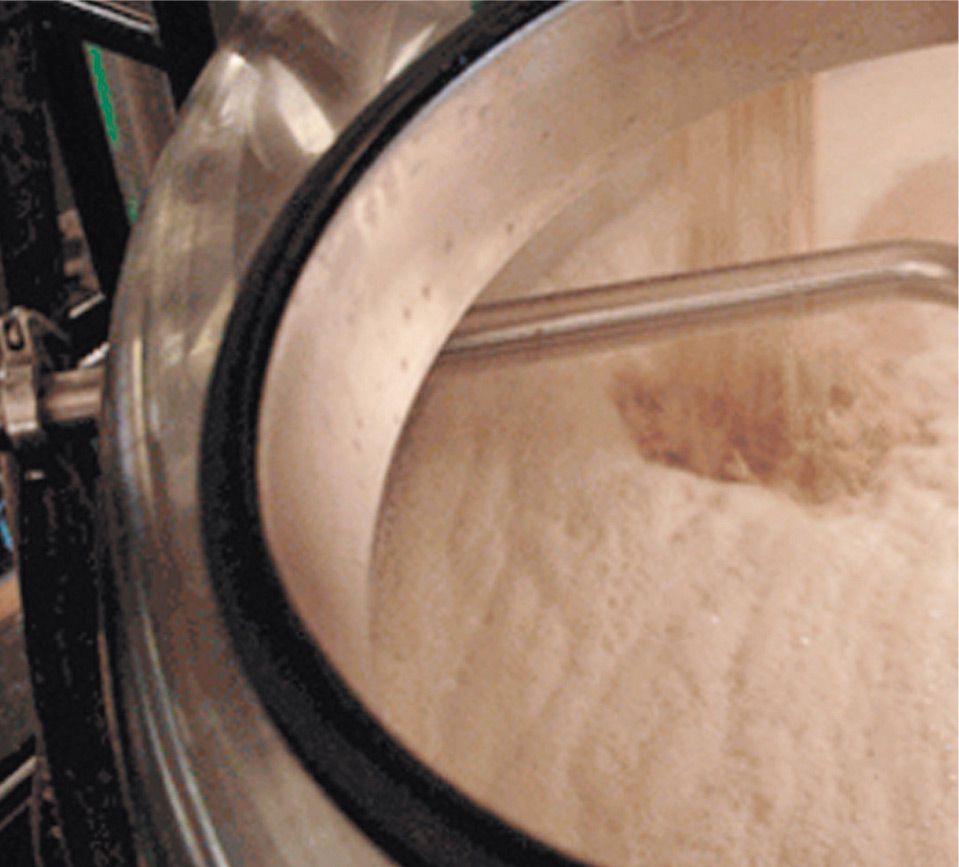
Beer is a beverage originating with grain, in which the flavor of the grain is balanced through the addition of other flavorings. Since the Middle Ages, those flavorings have principally been hops, the intensely-flavored flower of the humulus lupulus plant. Originally a preservative as much as a flavoring, hops have been used by brewers for centuries.
Today, a brewer typically starts the process with cereal grains—usually, but not exclusively, barley. The grains are malted, meaning that they are germinated, quickly dried, and often roasted. The extent to which malted grain is roasted imparts color to the beer. The malt is then mashed, or soaked long enough for enzymes to convert starch into fermentable sugar. The mashing takes place in a vessel which is called a mash tun.


The basic ingredients of beer are malted barley, hops and water, to which yeast is added to complete the transition of the raw materials into beer. (Budvar)
Water is then added to the mash to dissolve the sugars, resulting in a thick, sweet liquid called wort. The wort is then boiled in what brewers call a brew kettle. At this point, most brewers add hops. Throughout history, brewers have occasionally added seasonings other than hops to their beer. The Egyptians added flavorings such as fruit and honey, and certain modern beers contain fruit and spices.
Finally, the yeast is added to the cooled, hopped wort, and the mixture is set aside to ferment into beer. During the fermentation process the yeast converts the sugars into alcohol and carbon dioxide. The vast majority of beers in the world today are fermented to between 4- and 8-percent alcohol by volume (ABV), though there are exceptions, and many popular beers in North America and Western Europe today fall in the 9 to 12 percent range.
There are two principal types of yeast used in brewing, though they are not the only ones. Most are fermented with Saccharomyces pastorianus, formerly known as Saccharomyces carlsbergensis, generically called lager yeast. It is a “bottom-fermenting” yeast because it does the work of converting starch and sugar into alcohol and carbon dioxide at the bottom of the fermenting vessel. The other major type is top-fermenting Saccharomyces cerevisiae, known as ale yeast. The use of spontaneously-fermenting wild yeast of the genus Brettanomyces, once rare outside Belgium’s Senne Valley, is now more widespread.

The brewhouse at Alaskan Brewing in Juneau. (Alaskan)

Boiling the wort inside the brew kettle at the Pike Brewery in Seattle. (Pike)

Yeast at work, transforming starch into carbon dioxide and alcohol, inside an open fermenter at Schneider Weisse in Bavaria. (Schneider)
For further detailed information about specific beer styles, the traveler is invited to continue this journey on page 274.